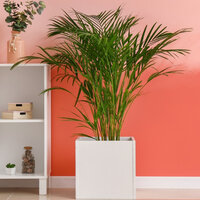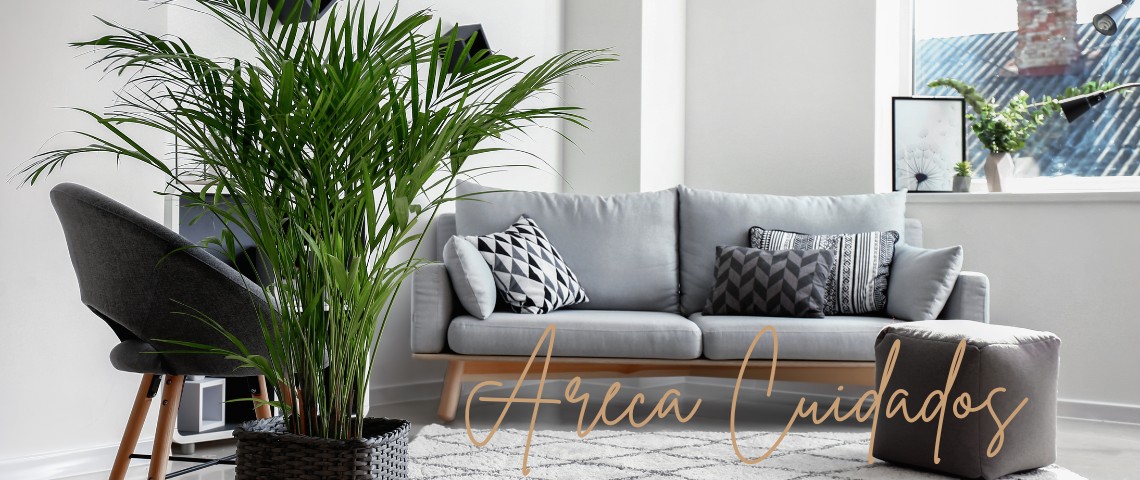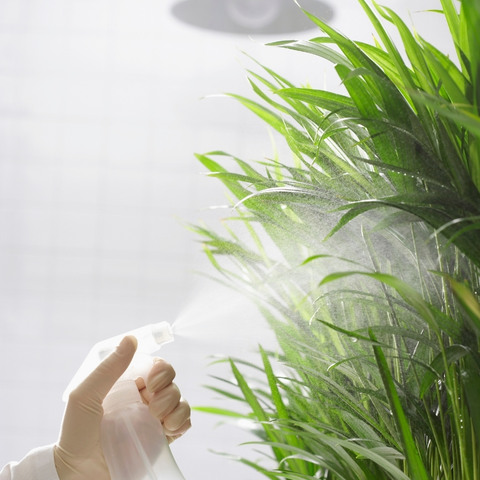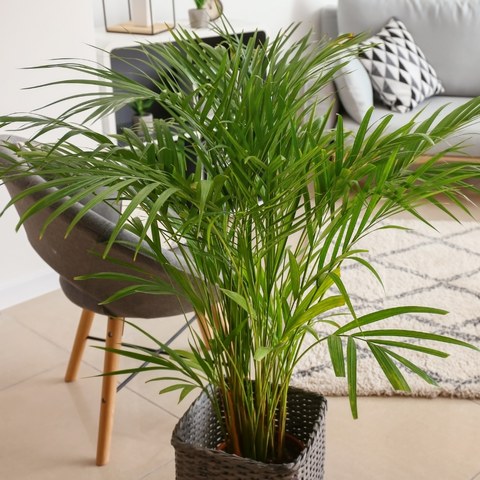-
How to grow an areca palm indoors? All care tips!

Join us as we delve into the essential care guidelines for the Areca Palm, a highly sought-after species that has captured the hearts of many indoor space enthusiasts. Dubbed the Bamboo Palm or Yellow Palm, this tropical beauty is renowned for its striking ability to transform any room into a lush oasis. One of its most significant advantages is its remarkable air-purifying properties, making it a popular choice for home decor. In this article, we'll explore the must-know tips and tricks to keep your Areca Palm thriving in your indoor space.
Continue reading this informative piece, our comprehensive guide to 'Care for your Areca Palm', to discover all the essential information you need to ensure the well-being of this popular species.
characteristics of the areca palm
The Areca palm, bamboo palm or also golden cane palm (Latin name: Dypsis lutescens) has certain particularities that we will tell you about below:
- It is native to the island of Madagascar.
- It is a medium-sized plant, generally between 1.5 and 3 metres in height, although in optimum conditions in its natural habitat it can reach up to 5 to 6 metres.
- The leaves are divided into a large number of leaflets and are quite long and can reach up to two metres.
- It is also called gold palm because of its ringed trunk, which is similar to bamboo.
- The flowers of this species are white and small, and are characterised by their intense and very pleasant aroma.
- The fruits are yellow in colour and become darker as they ripen.

tips on how to care for your areca
The areca palm (Dypsis lutescens) is nowadays one of the most popular houseplants and has always been a very desirable plant. In the care guide you will find detailed information about light, watering, substrate and other things you need to know to care for your areca palm, which are described below.
light

This species can withstand direct sunlight, but does much better in bright environments where it is not directly exposed to sunlight. For this reason it is widely used as an indoor plant as it will thrive in any well-lit room.
temperature and humidity
Regarding temperature, this plant is a species from tropical environments, so it is recommended that it should ideally be kept in an environment above 15 ºC. The optimum temperature for this species is between 18 ºC and 25 ºC. With regard to humidity, it requires a slightly high ambient humidity, as it transpires a large amount of water through its leaves. When the areca palm lacks humidity, the tips of its leaves start to turn brown, so you should spray water on them at least a couple of times a day on very hot days.
watering
As it is a species native to tropical climates, the areca palm needs regular and abundant watering. When watering frequency is recommended, it should always be known that these are indicative recommendations. In this case, it is recommended to water it every 2 or 3 days in spring and summer. In the winter and autumn months it is advisable to reduce the frequency of watering.
It is important to know when to water and always check that the substrate is kept slightly damp, but never waterlogged. This species is very demanding with water, so it always requires humidity in the substrate, but it should never be waterlogged as this can drown it.
soil
As we mentioned above, this species is characterised by purifying the air and because of this it needs fertiliser more than others, especially if you want to see it full of life and lots of green. In the spring and summer months it is advisable to fertilise it once a month with fertiliser for tropical plants.
fertiliser
Give your Areca fertiliser (liquid plant nutrition) during the spring and summer months. About once every three to four weeks is usually more than enough. For the exact amount of fertiliser, please refer to the product packaging. During autumn and winter the areca does not need any fertiliser.

problems affecting the areca palm tree
When you have your plant at home something can always happen to it, they are living beings. These are some of the problems that the Areca palm can have:
brown leaf tips
If the tips of the leaves turn brown, there are two reasons for this, either because the plant is in a very dry environment or because it has been over-watered. The first problem can be solved by spraying the leaves with water on a regular basis, and the second problem can be solved by making sure that the soil does not become waterlogged.
yellow leaves in general
If the leaves start to turn yellow, it may be due to a pest, so it is important to inspect the underside of the leaves in order to detect and treat the pest correctly. Be sure how to revive a suffering plant, don't throw it away and give it a chance!
yellow leaves on the underside
If the Areca receives too much sunlight, it can develop yellow or brown leaves. This mainly affects the lower leaves. Prune these leaves so that the plant can devote all its energy to the healthy leaves. Move the golden palm closer to the window.
find your palm tree on our website!
On our website florespana.es you can find a wide variety of plant species, both indoors and outdoors. You can also find a wide variety of palm trees Dypsis lutescens. In addition to the products you can find on our website, you can find a lot of information about the world of plants that may be of interest to you.
No comments found.